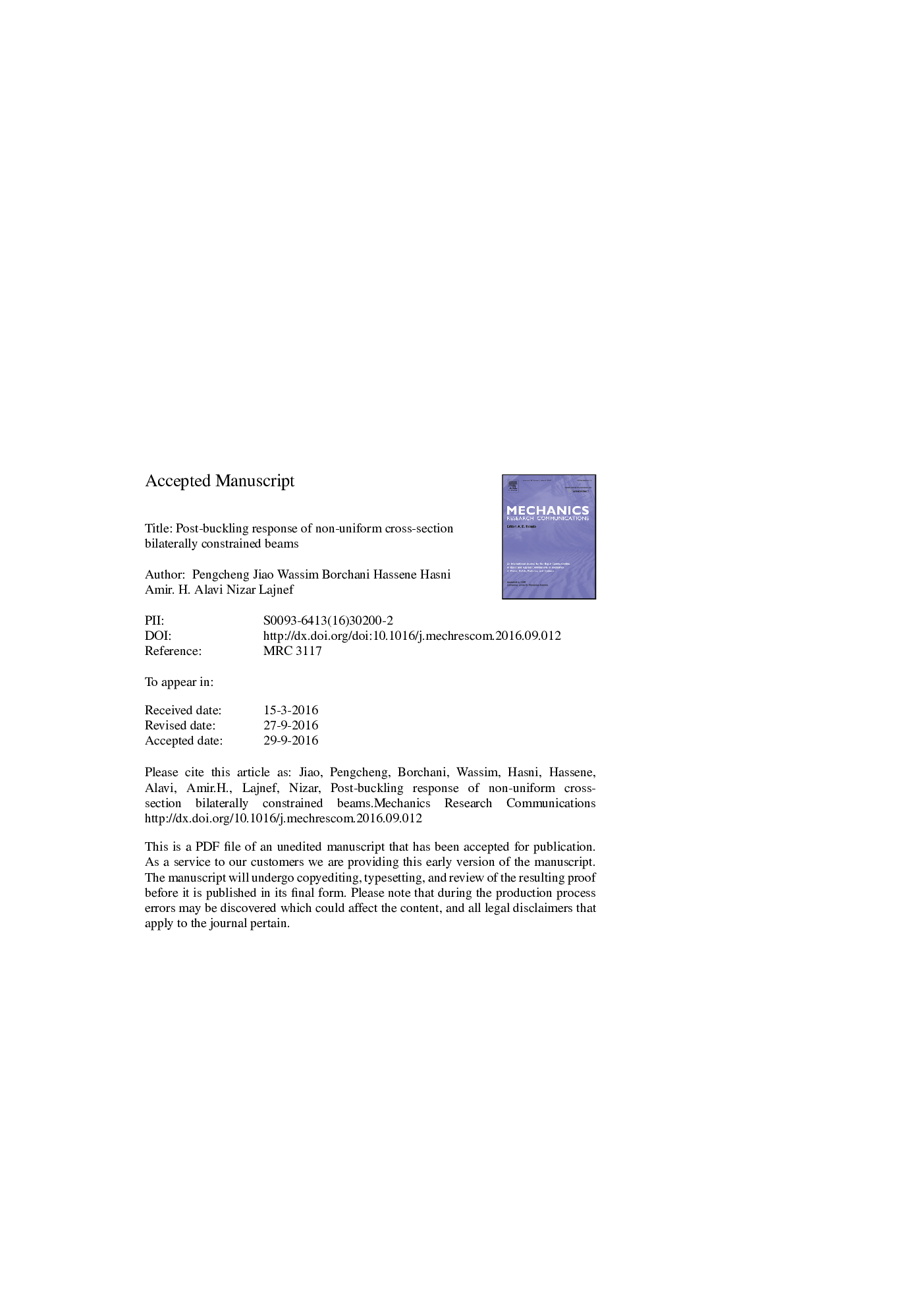| Article ID | Journal | Published Year | Pages | File Type |
|---|---|---|---|---|
| 5018693 | Mechanics Research Communications | 2016 | 10 Pages |
Abstract
Buckling and post-buckling behaviors of structural elements have been widely used to create multi-stable mechanisms that have shown a great efficiency in many applications such as sensing, actuation and energy harvesting. Under an increasing axial loading, the strain energy stored in a buckled bilaterally constrained elastica is suddenly released, through a snap-through transition. These transitions can be used to convert low-rate and low-frequency excitations into high-rate motions that are converted into electrical signals using piezoelectric transducers. However, for efficient sensing and energy harvesting, these transitions have to be controlled. It has been shown that the spacing between the transitions cannot be controlled just by tuning the geometry properties of a uniform cross-section beam. This paper investigates the effect of different non-uniform cross-sections on the post-buckling response of a bilaterally constrained beam. An energy-based model that takes into account the shape variation is herein presented. The variation of the beam's cross-section area can either be continuous or piecewise continuous. The total potential energy of the system is minimized under constraints that represent the physical confinement of the beam between the lateral boundaries. Results demonstrate that the spacing ratio between buckling-mode transitions can be efficiently controlled by the beam's shape and geometry dimensions.
Related Topics
Physical Sciences and Engineering
Engineering
Mechanical Engineering
Authors
Pengcheng Jiao, Wassim Borchani, Hassene Hasni, Amir. H. Alavi, Nizar Lajnef,
